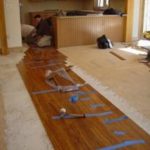If your city doesn’t have a park where you can hone your skills, you can build a skateboard ramp. With your own ramp, you can skate all day long.
Required Tools and Materials
100-grit sandpaper
Nails
Screws
Hammer
Saw
2 x 4s
Yardstick
Plywood
Step 1
Determine what kind of skateboard ramp you want to make. You can choose from a half pipe, quarter pipe, mini ramp or kicker. Draw a sketch of the ramp.
Select the wood to be used. Pressure treated plywood is the best, especially if the ramp will be built outside your home. However, it can be quite heavy. If you want a portable ramp, non-pressure treated wood is a good choice.
Step 3
The dimensions of the ramps vary. Eight feet is regarded by some as the standard width. The height is up to you. If you are going to build a skateboard ramp to work on your vertical tricks, make the ramp high.
Step 4
Draw the ramp curve on the plywood. Use your ramp sketch as a guide.
Step 5
Saw the plywood along the lines you drew up. Be careful when you cut. Make sure that it is correct.
Step 6
To make the frames, use the plywood panels you sawed off. Secure the 2 x 4 wood pieces on the side panels with the nails. You can also use screws. Distribute the 2 x 4 braces evenly. This is to ensure the ramp is secure.
Step 7
Cut a plywood sheet half an inch thick. Secure this on the frame you just made. The half inch thickness is necessary for bending the wood without breaking it.
Step 8
Secure the plywood board with screws or nails. The fasteners should be secured on the side panels and the braces. When you secure the pieces, make sure to bend the plywood so it can be set on the ramp.
Step 9
Smooth the surface of the ramp with sandpaper. Sand the plywood board until it becomes very smooth. Use a rag to wipe it.
Painting the Ramp
This isn’t really necessary. But if you want to paint, it is best to do so while the pieces are still being assembled.
Tips and Warnings
Wear a helmet, knee pads and elbows when you go skating.
If you want to build a skateboard ramp that can be disassembled, use screws rather than nails. They are easier to take off. Use nails if you have no plans of disassembling the unit.



